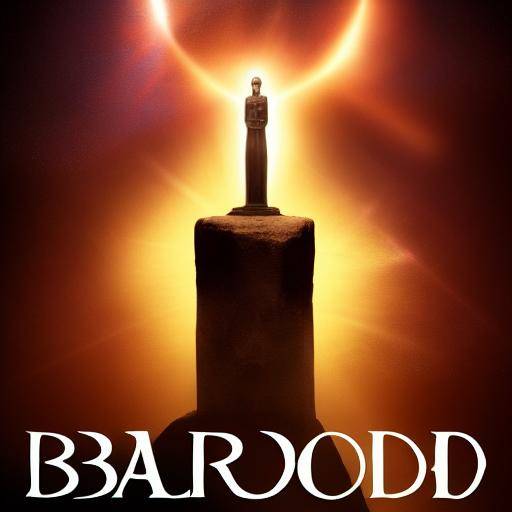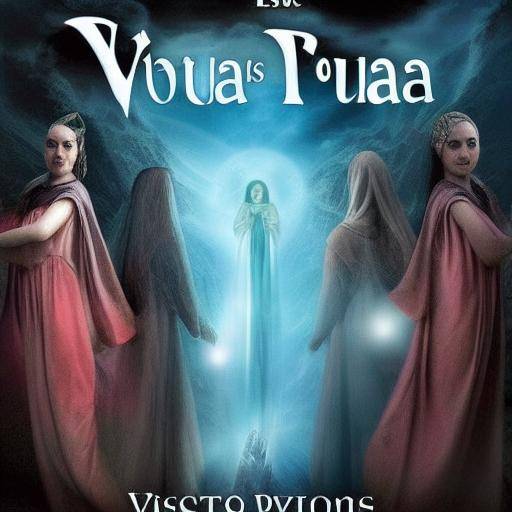
It is impossible to penetrate the Nordic mythology without recognizing the legendary figure of Baldur, the god of light and innocence, whose tragic destiny has endured through the centuries. In this fascinating exploration, we will discover the mysteries and tragedies surrounding Baldur, as well as its profound significance in the Nordic mythology. From its origins to its tragic destiny, we will travel through the Nordic myths and the very concept of destiny, unraveling the complexity and depth of these powerful ideas.
Introduction
In the vast cosmology of the Nordic myths, Baldur emerges as a central figure, whose beauty and goodness were incomparable. However, his tragic fate in the hands of his evil brother, Loki, has left an indelible mark on the Nordic mythology. In this article, we will enter the history of Baldur, its meaning in the Nordic mythology and the concept of destiny that surrounds his life and death.
History and Background
Baldur, son of Odin and Frigg, enjoyed the admiration and love of all beings, both mortal and divine, because of their goodness and beauty. However, his mother Frigg, fearful that her son could suffer a bad fate, undertook the mission to obtain promises from all living beings and objects that would not harm Baldur. The only exception was the humble mistletoe wood, which went unnoticed.
It was Loki, the intrepid and cunning god of mischief, who perceived Baldur's vulnerability and manipulated Hoder, the blind god, to throw an arrow made of mistletoe that ended Baldur's life. This tragedy triggered a series of events that culminated in the Ragnarök, the cataclysmic end of the world in Nordic mythology.
Detailed Analysis
Baldur's history raises profound questions about the nature of destiny, vulnerability and inevitability of tragic destiny. From a mythological perspective, his death symbolizes the fragility of human existence and the constant confrontation with forces beyond our control. The Baldur tragedy serves as a reminder that even the most loved and protected beings are subject to destiny.
Comprehensive review
Beyond its tragic end, Baldur's myth could be interpreted as a reflection on the importance of innocence and purity in a world marked by corruption and intrigue. Moreover, its tragic destiny triggers a series of events leading to the Ragnarök, a recurring theme in the Nordic mythology that symbolizes the eternal cycle of destruction and rebirth.
Comparative analysis
By comparing Baldur's history with other Nordic myths and reflecting on the concept of destiny in these narratives, fascinating parallels emerge that reveal the complexity and wealth of Nordic mythology. Similarly, the tragedies and challenges facing the gods reflect human struggles and tribulations, which further enriches the meaning of these ancient stories.
Practical Tips and Accessible Tips
Although the Nordic myths and the tragedies of the gods may seem alien to our daily lives, the lessons they contain are timeless. Baldur's story invites us to reflect on the fragility of life, the importance of goodness and beauty, and the inevitability of tragic destiny. By internalizing these lessons, we can cultivate a deeper understanding of our own existence and the world around us.
Conclusions and FAQs
Concluding, Baldur's history transcends the borders of time and culture, reminding us of the importance of destiny and tragedy in Nordic mythology, as well as the universality of the struggles and challenges we face as human beings. Through its tragic history, Baldur continues to illuminate our understanding of destiny and human nature, keeping alive its relevance over the centuries.
Frequently asked questions
1. What is Baldur's role in Nordic mythology?
Baldur is known as the god of light, innocence and beauty in the Nordic mythology. His story highlights the vulnerability to destiny and tragedies that mark the coming of the gods.
2. How does Baldur's myth influence contemporary culture?
Baldur's myth remains a source of inspiration for literary, artistic and cinematic works. His history resonated over the centuries, maintaining its relevance in contemporary culture.
3. What lessons can we learn from Baldur's tragic fate?
Baldur's history reminds us of the fragility of life, the importance of goodness and beauty, and the inevitability of tragic destiny. It invites us to reflect on our own lives and human nature.
4. How does Baldur's tragedy relate to the Ragnarök concept?
Baldur's tragedy triggers a series of events leading to Ragnarök, the end of the world in Nordic mythology. His tragic destiny is intrinsically linked to this cycle of destruction and rebirth.
5. Are there other figures in Nordic mythology with tragic destinations similar to Baldur?
Yes, the Nordic mythology is full of figures with tragic destinies, such as the very Odin, whose end is linked to the Ragnarök. These stories reflect the complexities of destiny and human nature.
6. What symbolizes Baldur's tragedy in broader terms?
Baldur's tragedy symbolizes the vulnerability of human existence and the struggle against forces beyond our control. Its history deepens our understanding of human nature and destiny.
By exploring the fascinating history of Baldur, the richness of Nordic myths and the weight of destiny, we enter into a universe of knowledge, reflection and transcendence. As we immerse ourselves in these depths, we move away with a renewed understanding of the complexity of existence and eternal dance between light and darkness, beauty and tragedy, and destiny and uncertainty in the Nordic mythology.
Conclusion
In conclusion, we will strengthen the importance and relevance of Baldur's history, the transcendence of the Nordic myths and the eternal mystery of destiny. We will also invite readers to continue exploring these fascinating themes to broaden their understanding and appreciation of Nordic mythology.
With this article, we seek to provide an integral and captivating view of Baldur, the Nordic myths and the concept of destiny, inspiring reflection and astonishment at the depth and wealth of these ancient narratives.


